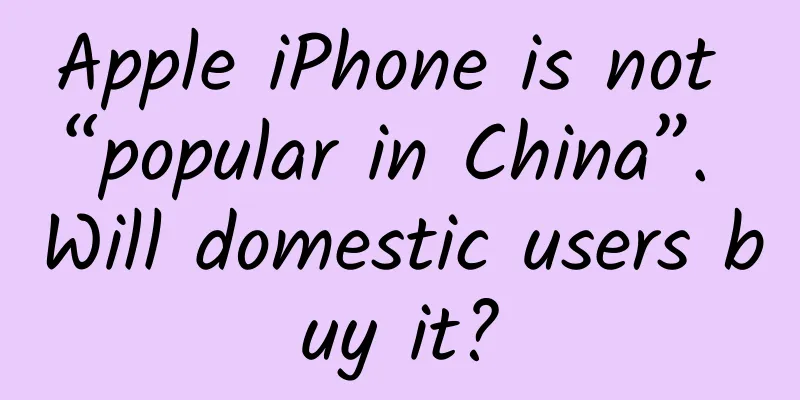Will carrier subsidy cuts really affect Apple?

|
With the substantial reduction in terminal subsidies by domestic telecom operators, some media recently quoted an insider from an operator's marketing department as saying that the price of Apple's new products will increase as a result, possibly to more than 6,000 yuan or even higher, and the growth in Apple's user base will therefore become unpredictable. Some analysts believe that the reduction in operator subsidies will directly bring huge losses to mobile phone manufacturers that are more dependent on operators. After reading this report, my first impression was that the impact of the reduction in operator subsidies on Apple was exaggerated. This argument seems to be cyclical, and it pops up every once in a while to fool people, so I think it is necessary to talk about this matter in order to "set the record straight", haha. Ever since Apple launched the iPhone, there has been a triangular chain of "Apple-telecom operators-consumers". The relationship between them is as follows: Due to the great popularity of the iPhone, operators have also gained a lot of benefits, such as attracting a large number of high-end users, establishing the brand image of operators, etc. With the update and iteration of the iPhone, the relationship of operators "working" for Apple has gradually formed - operators provide a large amount of phone bill subsidies and marketing expenses for the iPhone, all of which are paid by the operators, and the operators' profits are greatly affected. As the halo of Apple products gradually fades, operators have become very cautious in promoting iPhones. In fact, before the reduction of subsidies, the strategies of domestic telecom operators had already changed, and subsidies for iPhones had been reduced year by year. For example, after the launch of iPhone 5s last year, China Unicom and China Telecom no longer preferred to lose money to gain users, but to make more profits. Therefore, we can see that the thresholds of related phone packages provided by the two operators last year have been raised to a certain extent. In fact, this is not the patent of domestic operators. Since 2012, operators around the world have reduced their "support" for iPhones to reduce their profit pressure, and this trend has continued to this day. But we need to see that Apple's performance is not affected by these factors. Apple's third quarter results for fiscal year 2014 released in July this year show that during this period, Apple's net profit reached 7.7 billion US dollars, an increase of 12% over the same period last year. This is because the growth in sales of iPhone and Mac computers made up for the loss caused by the decline in iPad. It is particularly worth mentioning that the "BRIC" market (referring to China, India, Brazil, and Russia) became the biggest contributor to the growth of iPhone sales in the quarter, especially the Chinese market. Compared with the same period last year, iPhone sales increased by 48%, while the global market only increased by 9%. Affected by this factor, Apple's revenue in Greater China in the quarter was 5.9 billion US dollars, an increase of 28% year-on-year, which is also the best answer for Apple products worldwide. These growth figures have revealed the answer - although operators continue to reduce subsidies, iPhone sales are growing. They will not be disturbed by these factors, but will become more and more a new force to help Apple achieve market value and performance growth. In detail, according to my understanding of "Apple fans", their enthusiasm for Apple's new products is not restricted by price. In fact, this can also be extended to the general mentality of high-end users - whether the iPhone is 5,000 yuan, 6,000 yuan or higher, it actually better satisfies the vanity of high-end users, which is completely different from the consumer psychology of buying 1,000 yuan and 2,000 yuan mobile phones. In my previous article, I quoted Maslow's hierarchy of needs theory. Here it may be said again: low-end products bring very limited value to consumers, can only meet people's basic needs, and cannot make consumers pay high prices; while high-end products that meet consumers' high-level needs can enjoy high price feedback with brand premium. The reason why the author does this is to correct a common mistake made in media reports (saying that the market share of domestic mobile phones has surpassed Apple and Samsung) - it is not the case that domestic mobile phone brands have squeezed out the market share of iPhone. The decline in Apple's market share has nothing to do with domestic mobile phones, because the target user groups of high, medium and low-end mobile phones are clearly defined, and there is no parallel competition. It can only be said that the cheapening of smartphones has benefited more emerging markets, and the user base of low-end mobile phones has increased, diluting Apple's market space. So, the difference between Apple and domestic mobile phones lies here. When domestic mobile phones introduced measures such as building e-commerce channels to get rid of their dependence on operators, Apple was content to watch its performance rise. As long as the problems of domestic manufacturers' brands and the lack of high-end models are not solved, they will always be "minor", and will always be "across the sea" from Apple and Samsung. They will always deceive themselves by publishing some survey data and making some big claims to deceive and mislead the public. From the current situation, this kind of segmentation will last for a long time, because behind it is the maturity of social economy and the personalized needs derived from it. What's more critical is that domestic mobile phones lack the motivation to move upward - there is a huge information gap between cities and rural areas in China. iPhone and domestic mobile phones target different consumer groups, and the largest incremental market in the domestic market focuses on the low end. Among the mobile phone ownership in China, there are as many as hundreds of millions of feature phones that have not yet been replaced by smart phones. This also reflects that domestic mobile phones are no different from previous home appliances and PCs. They all quickly seize the market when the industry is mature or even in recession. While the iPhone and domestic mobile phones are enjoying themselves in the Chinese market, the distance between the Chinese and American mobile phone industries has quietly continued to widen. As a winner of Toutiao's Qingyun Plan and Baijiahao's Bai+ Plan, the 2019 Baidu Digital Author of the Year, the Baijiahao's Most Popular Author in the Technology Field, the 2019 Sogou Technology and Culture Author, and the 2021 Baijiahao Quarterly Influential Creator, he has won many awards, including the 2013 Sohu Best Industry Media Person, the 2015 China New Media Entrepreneurship Competition Beijing Third Place, the 2015 Guangmang Experience Award, the 2015 China New Media Entrepreneurship Competition Finals Third Place, and the 2018 Baidu Dynamic Annual Powerful Celebrity. |
<<: Behind the 260 million yuan fine: How did Qvod become a rogue platform?
>>: Neither the excellence of a single product nor Xiaomi’s experience can save Vancl
Recommend
OCPC deployment strategy in the medical industry!
1. Industry background and current situation anal...
TikTok's popular speaker Sony SRS-XB31 vs. JBL Pulse3, which one is the real Rock&Roll!
In the past, people basically listened to music w...
How to use Xiaohongshu for marketing, the ranking mechanism has been leaked!
Xiaohongshu is very popular now, and major beauty...
Operational tips: How to use new media to promote products
Before explaining new media operations, let’s fir...
Top 10 Complaints About Technology Products
Endless push [[129189]] Buzz! "You received ...
How to formulate an operating strategy for a product?
When it comes to the work content of operations, ...
Did you skip brushing your teeth during the Spring Festival holiday? Beware of bad breath!
When you are lying in bed getting ready to fall a...
Is the agency fee for the Artel prenatal education mini program high? Atailer Prenatal Education Mini Program Agency Fees and Process
How much does it cost for Artel to be an agent fo...
5 tips to solve 80% of the troubles of bringing goods to Douyin
The method of selling goods through live streamin...
China Express has added a new delivery address - space! What is so special about the Tianzhou spacecraft?
Tianzhou spacecraft publicly "collects items...
What are the most effective APP promotion channels at present?
What exactly is APP promotion for? Is it a channe...
I heard that AI red envelope covers are super profitable
If ordinary people want to make money using AI, t...
China Automobile Dealers Association: Automobile consumption index in December 2021 is 71.4
On January 6, 2022 , the China Automobile Dealers...
China's Internet mobile phone "civil war" spreads to India
Xiaomi's "Internet phone" concept h...
Turkey is so expensive, is it really more nutritious than the chicken we usually eat?
Key Points ★ In general, you can just eat ordinar...









